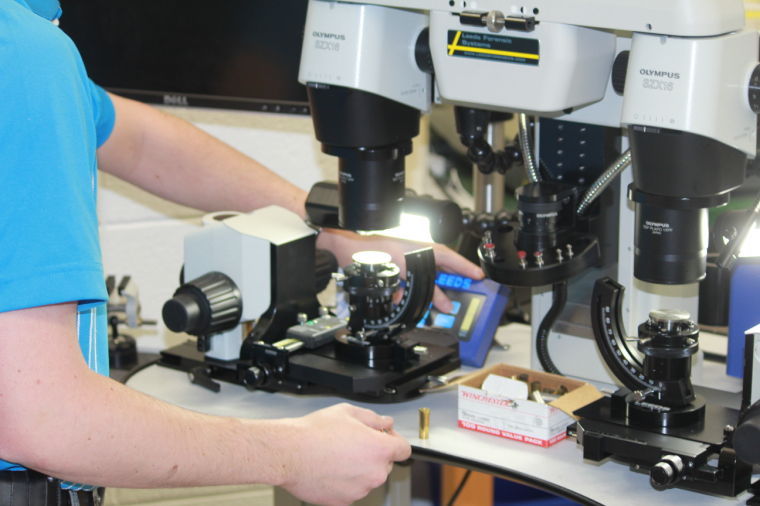Forensic comparative microscope hopeful addition for WU
March 5, 2014
As the groundbreaking day for the new science building draws closer, the forensic department looks to add a powerful learning device to the campus.
To add to the trace microscope that Washburn already owns, sights are now set on a comparative microscope. The difference is that the trace microscope can analyze compounds in dirt, hair follicles and other evidence not seen by the naked eye. Whereas, the comparative microscope can compare bullets fired from weapons and is able to determine what particular knife was used.
“The idea is that when you shoot a gun, you’re going to leave small tool marks on the bullet so that way when we actually take a look, we can see the lands and the grooves in the bullet itself,” said Jake Kurth, senior technical sales representative at Leeds Forensic Systems, Inc. “A bullet is going to have twist to it, like a football. The rifle spins the bullet to increase accuracy and speed.”
The marks, called lands and grooves, have a certain amount of space between them that is specific to each gun class. An example is how a glock has a square firing pin and every bullet fired out of a glock would have a square indention on the bullet case.
“Let’s say there is a bur that is left behind by a specific weapon and is only caused by that weapon; this is an individual difference that we would need to use the microscope for,” said Kurth.
The evidence compiled by comparison microscopes is solely used to determine what the murder weapon is. There are only a handful of college institutes that have a comparison microscope, with the majority of those located in law enforcement agencies.
The reason why these microscopes are not more common in college forensic programs is unknown. One possibility could be pricing, considering they can range from $50,000 to $70,000.
“We want our students to be able to graduate from these programs and be able to go to these law enforcement agencies and have background on the equipment being used,” said DeAnn Leach, lab supervisor.
Washburn will begin construction on the new building very soon. The addition of a microscope of this caliber would elevate Washburn’s forensics’ reputation, especially since there are very few colleges that have a comparison microscope.
“You can’t say ‘this is the weapon that killed him’ without doing some sort of comparative,” said Leach. “Maybe not this particular one, but something like this to be able to say that this is definitely the gun or the weapon used.”



